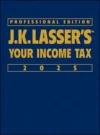5 Strategies for Minimizing Tax on Retirement Plan Distributions
You work hard to put money into your IRA, 401(k), or other tax-advantaged retirement savings program. The tax law is designed to encourage savings by giving tax breaks—deductions or exclusion from income—up front in most plans. But payback by you comes when you take distributions. Here are five ways to minimize the tax bite or at least postpone the day of reckoning.
1. Rollovers
If you receive a lump-sum distribution, you can roll it over to an IRA or into a retirement plan of another employer (if the plan accepts it). As you probably know, the rollover isn’t taxed when it is made as long as it’s made either (1) as a direct transfer from the retirement plan to the IRA or (2) within 60 days of the distribution.
When you’re entitled to the distribution, decide whether you’re going to use the funds or roll them over. If you don’t ask the plan to make a direct rollover, the distribution to you will be subject to an automatic 20% withholding. Then, if you decide to make the rollover, you’ll have to come up with the 20% out of pocket to complete a full rollover (you’ll get a tax credit on your return for the taxes withheld).
2. Qualified charitable distributions
If you are at least age 70-1/2, and don’t need the money to pay for personal expenses, you can opt to transfer up to $100,000 directly from your IRA to a public charity. The transfer—called a qualified charitable distribution (QCD)—is entirely tax free, and it can be used to satisfy your required minimum distribution (RMD). You can do this year after year.
However, you cannot use a QCD for distributions from qualified retirement plans or IRA-like plans (SEPs, SARSEPs, SIMPLE-IRAs).
3. NUA rule
If, as part of a lump-sum distribution upon separating from service, being age 59-1/2, or being disabled, you receive company stock, and you roll over the distribution to an IRA, you don’t have to pay tax on the stock until you sell or exchange it and you take the proceeds as an IRA distribution (taxed as ordinary income). However, if you don’t roll over the stock to an IRA, you may be able to take advantage of a special rule that’s only for company stock in your retirement account that you receive in a lump-sum distribution. Here’s how it works: you take possession of the shares and pay ordinary tax now on the cost basis of the stock (not on the appreciation realized while it was in the plan). In effect, you convert the net unrealized appreciation into capital gain when you later sell the shares, along with any future appreciation.
The net unrealized appreciation in that stock is the difference between the price paid for the stock and its current value; it is reported in box 6 of Form 1099-R. This strategy makes sense where you expect the value of the stock to appreciate, assuming you can afford to pay the tax now on the NUA.
Taking advantage of the NUA rule won’t trigger the additional 3.8% Medicare tax that applies to net investment income.
4. Reverse rollovers
As discussed earlier you can roll over your 401(k) account to an IRA when you leave a job. This gives you greater control over your money. However, the reverse strategy—rolling over your IRA to a 401(k)—can be effective in postponing taxes. Here’s how this works.
Assume you’re approaching age 70-1/2 but still working for a company that offers a 401(k) plan. You can transfer your IRA to the company plan. Then, instead of beginning required minimum distributions from your IRA at age 70-1/2, you can postpone them until retirement. There are a number of ifs for this strategy:
- The company plan must accept the rollover (not all plans do)
- The company plan must permit postponement of RMDs until actual retirement
- You cannot own more than 5% of the company
5. Rollovers of designated Roth accounts
If your employer’s 401(k) plan offers a designated Roth account option in which you can contribute after-tax dollars, you’ll still have to begin lifetime distributions at age 70-1/2. While the distributions aren’t taxed, they deplete the tax-free savings for the family (i.e., what can be inherited and distributed to heirs tax free). However, you can preserve the tax-free nest egg for the family by opting to roll over amounts in your designated Roth IRA account to your personal Roth IRA. The rollover is tax free, and there are no required lifetime distributions to you from your Roth IRA. The rollover of a designated Roth account to a Roth IRA must be done as a direct transfer; you cannot receive the distribution and then roll it over.
Conclusion
The entire area of retirement savings is highly complex. It’s a good idea to discuss your situation with a financial planner or tax professional.
Deductions
Items directly reducing income. Personal deductions such as for mortgage interest, state and local taxes, and charitable contributions are allowed only if deductions are itemized on Schedule A, but deductions such as for alimony, capital losses, moving expenses to a new job location, business losses, student loan interest, and IRA and Keogh deductions are deducted from gross income even if itemized deductions are not claimed.



